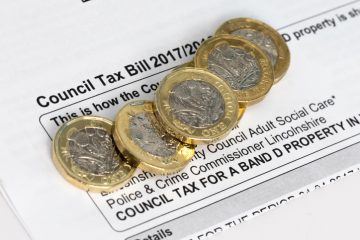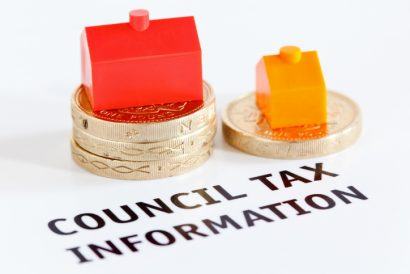The Office for National Statistics (ONS) and Land Registry have released their first official house price index of 2018, for January.
The report shows that the average house price in the UK increased by 4.9% in the 12 months to January, down from 5.0% in December 2017. The annual rate of growth has slowed since mid-2016, but has remained broadly around 5% since 2017.
In January, the average UK house price was £226,000. This is £11,000 higher than in January last year and unchanged on a monthly basis.
The main contributor to the increase in UK property values was England, where house prices rose by an average of 4.6% in the year to January, taking the typical value to £242,000. Wales experienced average house price growth of 4.5% over the same period, to £153,000, while Scotland recorded an average rise of 7.3%, to stand at £149,000. The average property value in Northern Ireland is currently £130,000, following a 4.3% increase in the fourth quarter (Q4) of 2017.
On a regional basis, London continued to boast the highest average house price, at £486,000, followed by the South East and the East of England, which stood at £323,000 and £290,000 respectively. The lowest average price continued to be found in the North East, at £123,000.
The East Midlands recorded the highest annual house price growth in January, with values up by an average of 7.3%. This was followed by the South West (6.9%), and the West Midlands and East of England (both at 5.3%). The lowest annual growth was seen in the North East, where prices rose by just 0.7% over the 12 months to January, followed by London, at 2.1%.
The local authority with the highest annual growth in the year to January was the Orkney Islands, where prices increased by an average of 23.6%, to reach £144,000. The lowest annual growth was recorded in Na h-Eileanan Siar, where prices actually dropped by an average of 13.6%, to hit £96,000.
In January, the most expensive location to purchase a property was the Royal London Borough of Kensington and Chelsea, where the average house price was £1.4m. In contrast, the cheapest place to buy a home was Burnley, at an average of just £77,000.
Comments
Jeff Knight, the Director of Marketing at Foundation Home Loans, responds to the data: “Despite predictions interest rates will double this year and ongoing political uncertainty delaying potential sellers, on the surface, it seems like prices are holding. Yes, London prices may be cooling and the Chancellor’s latest figures suggested some 60,000 first time buyers have now avoided paying Stamp Duty, but that doesn’t change the fact we are facing a continued lack of property available for sale. Not only is this another hurdle for younger buyers, but second steppers looking to upgrade their homes are being met with sky-high prices and limited choice.

First Official House Price Index of 2018 Released
“A call on developers to build and councils to release land will help, but ultimately we need the supply gap to be sorted sooner rather than later.”
The Chief Executive for Foresters Friendly Society, Paul Osborn, also comments: “For most households, achieving homeownership is not just a top saving priority, but the ultimate goal. However, sky-high prices, limited choice and competition to secure mortgage finances can often leave first time buyers wondering if they will ever be able to attain the dream of homeownership.
“Getting your financial know-how sorted on the savings products available early on can really help maximise your savings potential when you need it most. With a 25% boost to annual savings, younger savers who take up the Lifetime ISA can bring that goal closer by saving useful amounts towards a home deposit.”
Russell Quirk, the Founder and CEO of hybrid estate agent Emoov.co.uk, gives his thoughts: “A predictably slow start to the year and one that will subside as a larger degree of activity returns to the market over the coming months.
“This lethargic start will no doubt be welcomed by those who have persistently talked the marked down, using a slow in house price growth to add further fuel to the flames of a shambolic Brexit process. But, while we have seen occasional and marginal declines in house price growth over the last year, the market remains in pretty good health considering.
“As we drift closer to our European divorce, an inadequate level of suitable housing stock to satisfy even a reduced level of buyer demand will see prices remain stimulated, regardless of any wider external influences.
“Those buyers and sellers that are still sat on the sideline waiting for the impact of Brexit to hit, or for their property to regain the marginal value it may have dropped, may want to reconsider their position on the fence. Remaining there for too long will result in nothing but splinters as the rest of the market goes about its business as usual.”
Richard Snook, the Senior Economist at PwC, says: “Today’s data gives the first insight from the ONS and Land Registry figures for 2018, and shows a soft start to the year. House price inflation edged down to 4.9% in the year to January 2018, from a downwardly revised 5.0% in December (originally reported as 5.2%). While annual growth is positive, prices actually dropped by more than £600 on average from the previous month, taking the price of a typical UK house to £225,620.
“Regional trends, which can be volatile, show a mixed picture. Prices in the North East of England dropped sharply from £130,000 to £123,000 on average between December and January, whilst London posted a gain from £481,000 to £486,000, having been flat since the summer. This move does not change the general picture of soft performance in parts of London and the South East. For example, prices in Oxford are 5% lower than a year ago and prices in the City of London are down 8%.
“Sales volumes in the UK to November 2017 fell 11% compared to the year before, suggesting that prices could weaken in coming months. We are expecting UK wide house price inflation of around 4% in 2018.”
And Lee James Pendleton, the Founder Director of London estate agent James Pendleton, continues: “Transaction levels are plummeting and it’s obvious why this is happening alongside robustly high valuations.
“The property market, particularly in London, is being hobbled by time-wasters who refuse to accept good advice. These sellers have no realistic prospect of finding a buyer, because their expectations are so out of this world. They have done very well out of the housing market, but they haven’t earned that money, they’ve just lived in those homes and watched the magic money tree grow. Now they think prices can only go up.
“The result is that transactions levels drop, the speed of chains slows down and life is made more difficult for everyone involved. No one wins.
“The resulting affordability problem means the cheaper end of the market can’t keep up with people’s unrealistic expectations and estate agents wind up wasting hundreds of thousands of pounds a year marketing properties that won’t sell.
“We are in the business of selling homes, not beauty parading them in the faint hope of bagging a wild sales figure that defies the market. This is how you get the rounded topping out of prices that we’re seeing in this data, driven solely by low supply.”
Meanwhile, John Eastgate, the Sales and Marketing Director of OneSavings Bank, adds: “The uptick in property price growth has softened in recent months, especially in London, where the slowdown has had a disproportionate impact on the national picture. However, the mortgage market remains steady and growth is expected to continue along a modest path this year.
“With the end of the Term Funding Scheme, a possible May interest rate increase and absence of wage inflation, affordability will continue to be a challenge for potential homebuyers.”






